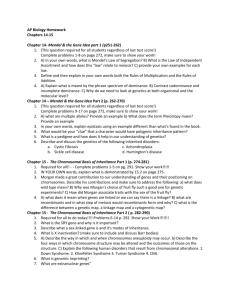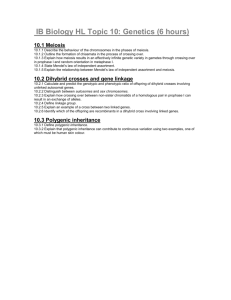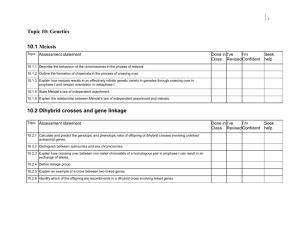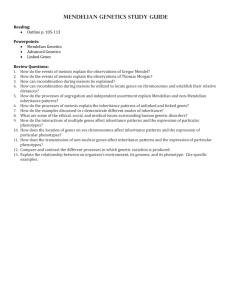Non- Mendelian Genetics and Chromosomal Inheritance
advertisement
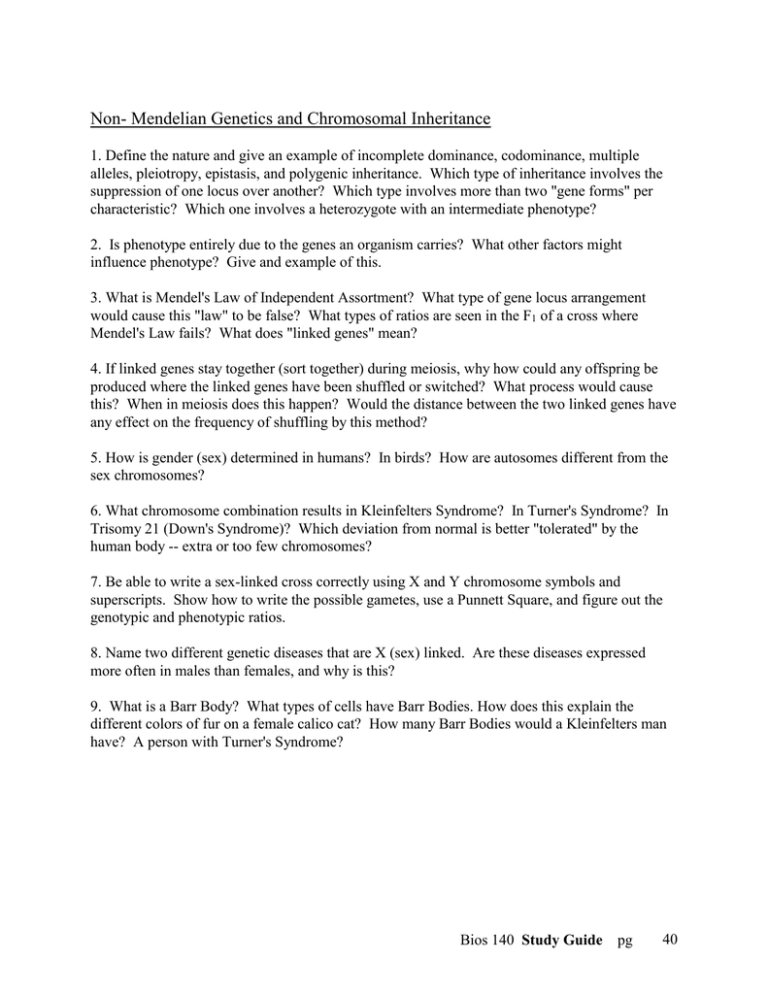
Non- Mendelian Genetics and Chromosomal Inheritance 1. Define the nature and give an example of incomplete dominance, codominance, multiple alleles, pleiotropy, epistasis, and polygenic inheritance. Which type of inheritance involves the suppression of one locus over another? Which type involves more than two "gene forms" per characteristic? Which one involves a heterozygote with an intermediate phenotype? 2. Is phenotype entirely due to the genes an organism carries? What other factors might influence phenotype? Give and example of this. 3. What is Mendel's Law of Independent Assortment? What type of gene locus arrangement would cause this "law" to be false? What types of ratios are seen in the F1 of a cross where Mendel's Law fails? What does "linked genes" mean? 4. If linked genes stay together (sort together) during meiosis, why how could any offspring be produced where the linked genes have been shuffled or switched? What process would cause this? When in meiosis does this happen? Would the distance between the two linked genes have any effect on the frequency of shuffling by this method? 5. How is gender (sex) determined in humans? In birds? How are autosomes different from the sex chromosomes? 6. What chromosome combination results in Kleinfelters Syndrome? In Turner's Syndrome? In Trisomy 21 (Down's Syndrome)? Which deviation from normal is better "tolerated" by the human body -- extra or too few chromosomes? 7. Be able to write a sex-linked cross correctly using X and Y chromosome symbols and superscripts. Show how to write the possible gametes, use a Punnett Square, and figure out the genotypic and phenotypic ratios. 8. Name two different genetic diseases that are X (sex) linked. Are these diseases expressed more often in males than females, and why is this? 9. What is a Barr Body? What types of cells have Barr Bodies. How does this explain the different colors of fur on a female calico cat? How many Barr Bodies would a Kleinfelters man have? A person with Turner's Syndrome? Bios 140 Study Guide pg 40
